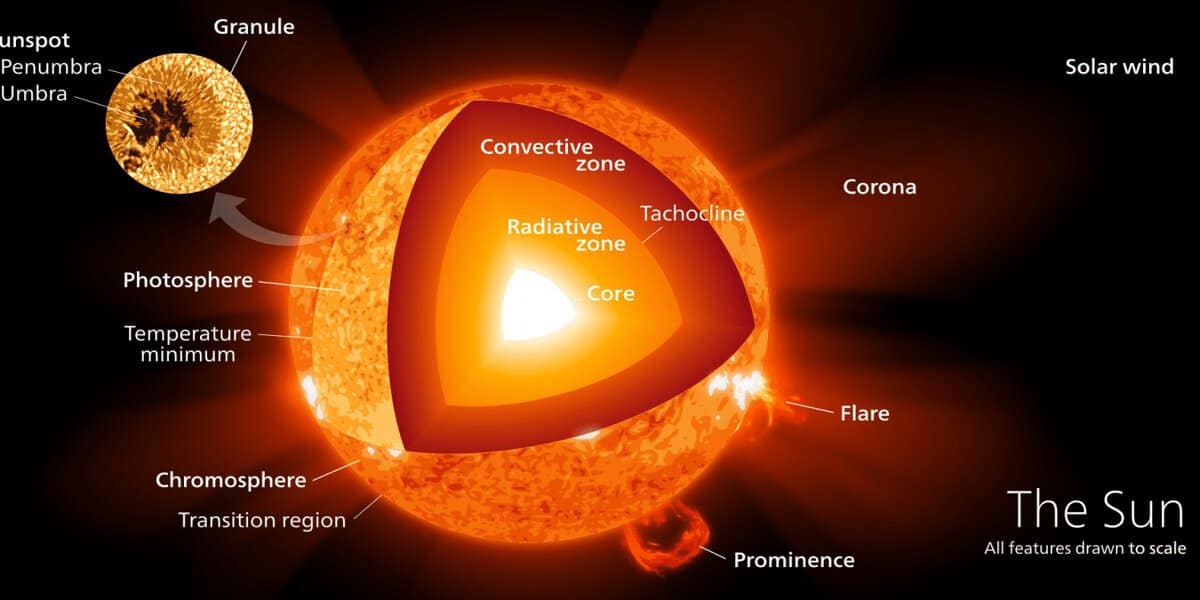Data on our closest celestial surroundings is now accessible to the general public: regular individuals can, from the comfort of their own homes, compute the distances to neighboring planets and the time it takes to travel to them. If you are curious about how far Mars is from the Sun, it is worth acquainting yourself with the fundamentals of measuring interstellar distances.
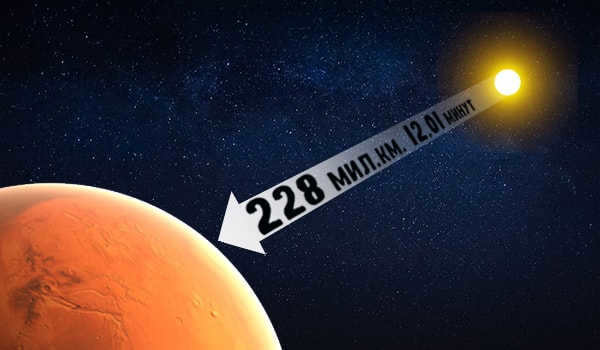
How is the distance to the stars measured and what is a light year
Distances in space are measured using special units that are separate from the international system of measurement.
A light year is a unit of distance in astronomy that represents the distance between the average position of Earth, the third planet from the Sun.
A light year is a unit of distance in astronomy, equivalent to 149,597,870 km
This unit can also be referred to as the radius of Earth’s orbit.

Distances between objects within a single star system, such as the solar system, can be measured in astronomical units. However, when it comes to the scale of the Universe, astronomical units are considered very small. Instead, the distance between stars and galaxies is typically expressed in light years.
In the field of physics, light has long been regarded as the fastest phenomenon in the world. However, even on a cosmic, non-dimensional scale, light does not travel instantaneously. As it traverses from one corner of the Universe to another, light slows down, scatters, undergoes changes in its spectrum, and encounters various material obstacles.
A light year is a unit of measurement that represents the distance that light can travel in one Earth year, which is equivalent to 9,460,730,472,580,800 meters.
The distance of one light year can be calculated by multiplying the speed of light by one Earth year. However, before doing the multiplication, it is necessary to convert the Julian year to seconds, as the speed of light is also measured in seconds.
A Julian year (a) is a unit of time measurement in astronomy that is equivalent to 365.25 Julian days.
By using astronomical units, we can conduct more intricate computations.
Speed of Light
The term “visible light rays” refers to a flow of particles known as photons, deriving its name from the Greek word “photos” meaning “light”.
For humans, a light year represents an immensely vast distance that cannot be overcome. The average person, under the influence of Earth’s gravity, can achieve a speed of approximately 20 kilometers per hour. In contrast, photons move 60 million times faster, covering a distance of 300 thousand kilometers every second. This stands as the ultimate speed attained by visible light in a vacuum.
The velocity of light in a vacuum amounts to 299,792,458 meters per second.
In the presence of air or water, such as in Earth’s atmosphere or oceans, light only decreases in speed by a maximum of 25% and still travels at an impressive 225,000 kilometers per second.
These figures provide the basis for numerous calculations that help us evaluate the feasibility of interplanetary and interstellar travel. In just one minute, light can cover a staggering distance of 18 million kilometers.
As humanity continues to advance technologically and approach the speed of light, the time required for space travel will continue to diminish.
What is the distance to Mars in light years?
We have long been aware of how to overcome the immense distance and how long it takes to travel to Mars through practical examples.
The duration of the journey to the red planet for Earth astronauts is not a fixed value due to the constant motion of our planet and Mars. Each planet follows a different orbit around the sun, which means they can be either approaching each other or located on opposite sides of the star at significant distances.
Undoubtedly, the most cost-effective solution for Earthlings would be to embark on a mission to Mars when the planets are positioned at the closest proximity.
The distance covered by light in a single year is 9,460.73 billion kilometers. The smallest conceivable gap separating Earth and Mars amounts to 54.55 million kilometers.
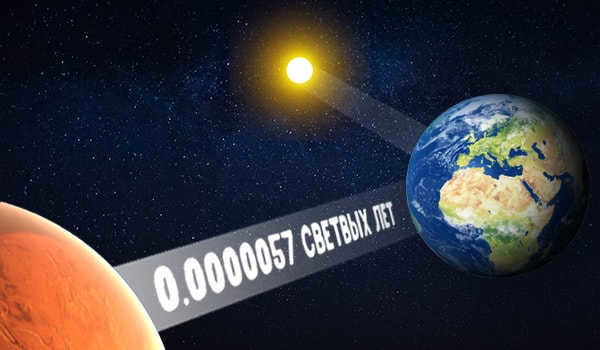
From this information, it can be inferred that the shortest distance separating these two celestial bodies measures 181 light seconds, which is equivalent to 3 light minutes. In simpler terms, the gap between Mars and Earth amounts to approximately 0.00000570776255707763 light years.
What is the duration of light travel to Mars?
Despite being physically inaccessible, it is possible to accurately estimate the average time it takes for starlight to travel from the Sun to Mars.
The journey from the central star of our solar system to Mars can be completed by a photon, or a particle of light, in approximately 12.01 minutes, without accounting for any obstacles or interference. This calculation is based on the constant speed of light in a vacuum, which is 300,000 kilometers per second, and the average distance between Mars and the Sun, which is approximately 228 million kilometers.
By dividing the distance of 228,000,000 kilometers by the speed of light, 300,000 kilometers per second, we get 760 seconds, which is equivalent to 12 minutes and 1 second – the time it takes for light to travel from the Sun to Mars, or vice versa. When Mars is at its farthest point from the Sun (aphelion), light will take approximately 13.01 minutes to travel, while at its closest point (perihelion), it will take approximately 11 minutes.
How much time does it take to travel to Mars at the speed of light?
Calculating the duration of a hypothetical journey to Mars is a straightforward task using the information provided above. We have precise data on the flight path, potential routes, and the minimum distance between Earth and Mars, which is over 54 million kilometers. At the speed of light, this distance can be covered in just 3 minutes. Unlike conventional transportation methods that take months or even longer, a trip to Mars would be almost instantaneous when traveling at light speed. Comparing the three-minute journey between Mars and Earth at light speed to any form of terrestrial transportation is challenging.
If humanity can achieve the ability to travel at light speed, the Red Planet will become accessible. Given the current rate of scientific progress, it is only a matter of time before we discover new futuristic modes of transportation that make light-speed travel a reality.
Do you find the information helpful? Show your support on social media!
What is the duration for sunlight to reach Earth? It is evident that sunlight travels with the speed of light. Photons that are emitted from the surface of the Sun require some time to travel through the vast expanse of space and finally reach our eyes. On average, it takes sunlight approximately 8 minutes and 20 seconds to cover the distance from the Sun to Earth. If the Sun were to suddenly vanish from our universe, it would take a little over 8 minutes before any noticeable changes occur.
It becomes much more fascinating when we contemplate the passage of photons within the Sun. It is common knowledge that photons are generated through thermonuclear reactions occurring deep within the Sun’s core. These photons undergo numerous emissions and absorptions within the star’s radiant zone before eventually reaching the surface. In fact, the photons that ultimately reach your eyes were actually formed tens of thousands of years ago. Hence, the journey to Earth, which lasts a little over 8 minutes, represents just a fleeting moment in the lifespan of a photon.
It is evident that when observing the vastness of space, one is essentially peering into the past. For instance, the light emitted by Alpha Centauri, our closest star, takes approximately 4 years to reach us. Therefore, when we observe Alpha Centauri, we are actually witnessing what it looked like 4 years ago. Furthermore, there are galaxies situated millions of light years away, meaning that if there were a civilization with highly advanced technology in one of these galaxies, they might have the ability to observe dinosaurs, which once roamed the surface of our planet.
While we often take the Sun for granted, it is important to consider how it actually shines and what occurs within its core. As many are aware, the Sun is a massive celestial body comprised primarily of hydrogen and helium.
On the surface, the temperature of the Sun is approximately 6000 Kelvin, but as one delves deeper towards its core, both the temperature and pressure increase significantly. Upon reaching the core, the temperature reaches a staggering 15 million degrees Kelvin.
When the temperatures and pressures reach a certain point, the fusion reaction commences.
Within the nucleus, four hydrogen atoms come together to create a helium nucleus. This process occurs continuously, with an infinite number of reactions happening every second.
Every second, over 600 million tons of hydrogen are converted into helium. The Sun converts a mass of hydrogen equivalent to the mass of the Earth every 70,000 years. As you may be aware, it takes approximately 8 minutes for light from the Sun to reach the Earth, but the radiation in the form of solar flares takes much longer to reach our planet.
The journey of light from the nucleus
When a fusion reaction occurs, an enormous amount of energy is released in the form of photons. These photons are emitted and absorbed by gas molecules. Throughout the lifespan of a photon, this process occurs numerous times.
Surprisingly, it requires a staggering 200,000 years for a photon to escape from the center and reach the surface.
It takes hundreds of thousands of years for light to make its way from the core to the surface. However, a beam of light from the Sun to the Earth only takes eight minutes.
This brilliant sphere is too dazzling for the unaided eye. However, upon closer examination, one can discern the authentic essence of the Sun. This colossal orb of luminous gas stands as the most immense entity within the solar system. The Sun generates radiant heat and light, serving as the primary source of energy for life on Earth. Deep within its core, a perpetual stream of nuclear reactions nuclear reaction takes place. Although our star poses risks, our existence would be impossible without it. Every facet of life hinges upon the Sun.
Light is a fundamental element present in our universe and is an integral part of everything. It not only holds immense importance, but also possesses incredible speed in the cosmos. The velocity of light is an astonishing 300,000 kilometers per second. Considering the fact that the distance between the Sun and Earth is approximately 150 million kilometers, it takes around 8 minutes for light to reach our planet. However, these 8 minutes merely represent the final stage of light’s remarkable journey. It takes nearly a million years for light to escape the Sun’s harsh internal environment. Consequently, the light that we currently observe on Earth was generated long before the existence of human civilization.
The Sun is composed of multiple layers of dense gas that span hundreds of thousands of kilometers. At the core of the Sun, a fascinating phenomenon takes place – nuclear fusion. This is one of the most destructive reactions known in the universe. By combining two hydrogen atoms, a reaction occurs, resulting in the production of helium. While this may sound like a straightforward process, it is actually quite complex. The challenge lies in the fact that two protons, which are the building blocks of hydrogen atoms, possess the same positive charge and therefore repel each other. Protons naturally avoid coming into close proximity with each other. The fusion of these protons requires an immense amount of energy, making it a rare occurrence. However, the Sun’s gravity generates the necessary heat and pressure to enable proton fusion.
As you may be aware, it typically takes approximately 8 minutes for sunlight to travel from the Sun to Earth. This is quite a rapid pace when compared to the amount of time it takes for light to travel from the Sun’s core to its outer edge.
Interestingly, photons, which are light particles, do not travel directly from the Sun’s core to the outside. Instead, as they leave the core, they enter a zone known as the radiative transfer zone, where energy is transferred through the absorption and re-emission of photons. Furthermore, the absorption and emission of photons are not dependent on their direction, causing them to be repeatedly emitted and absorbed numerous times before finally escaping to the outside. This process can take millions of years, with an average time of around 170,000 years.
2014’s Most Significant Scientific Discoveries
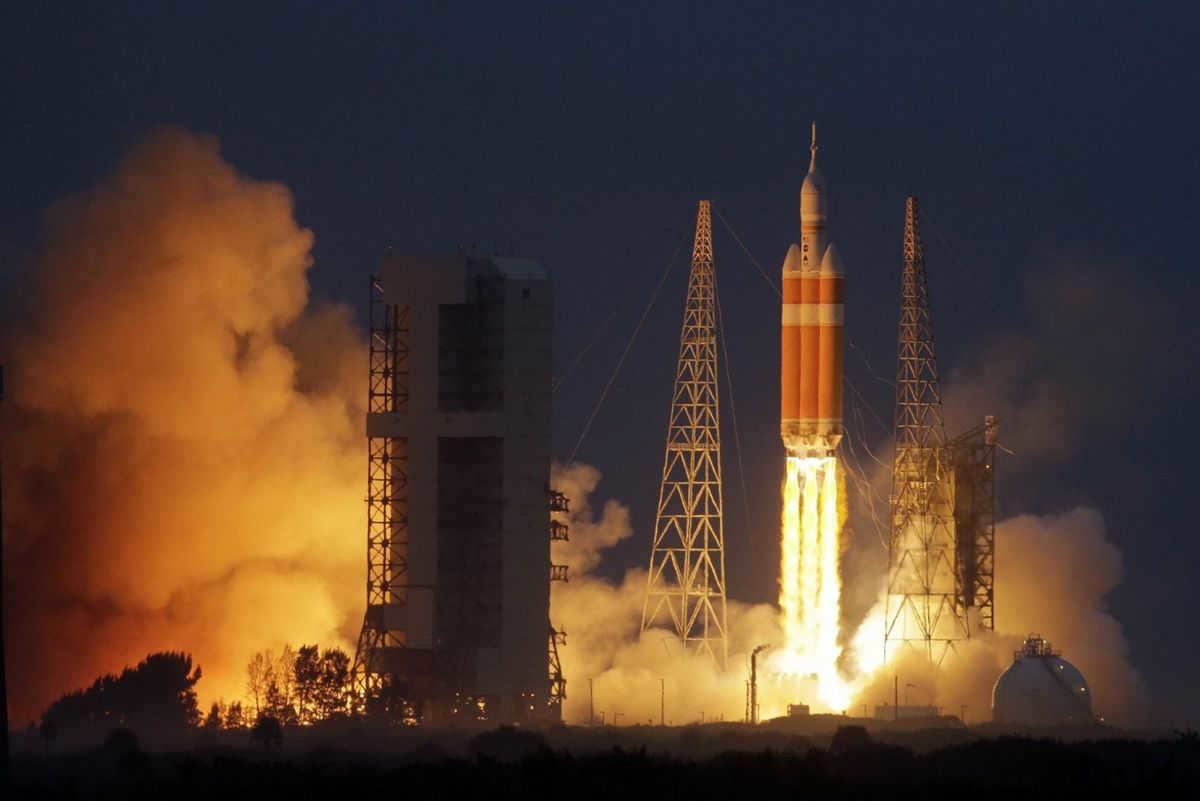
Currently, there are numerous intriguing questions about the universe that scientists are actively seeking answers to. Let’s explore the top 10 inquiries:
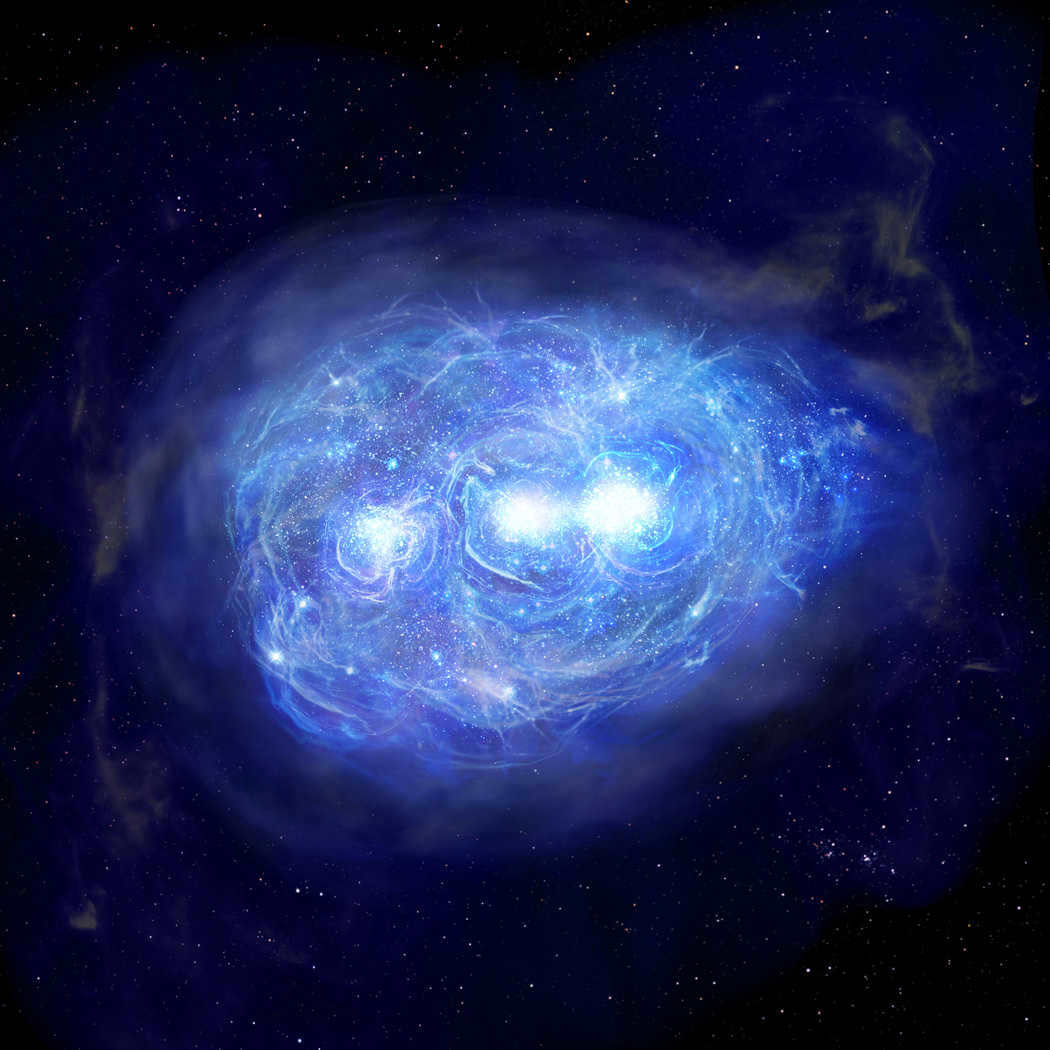
Did Americans ever set foot on the moon?

Russia lacks the necessary resources to engage in manned missions to the Moon

Here are 10 ways in which the vastness of outer space can pose a threat to human life:
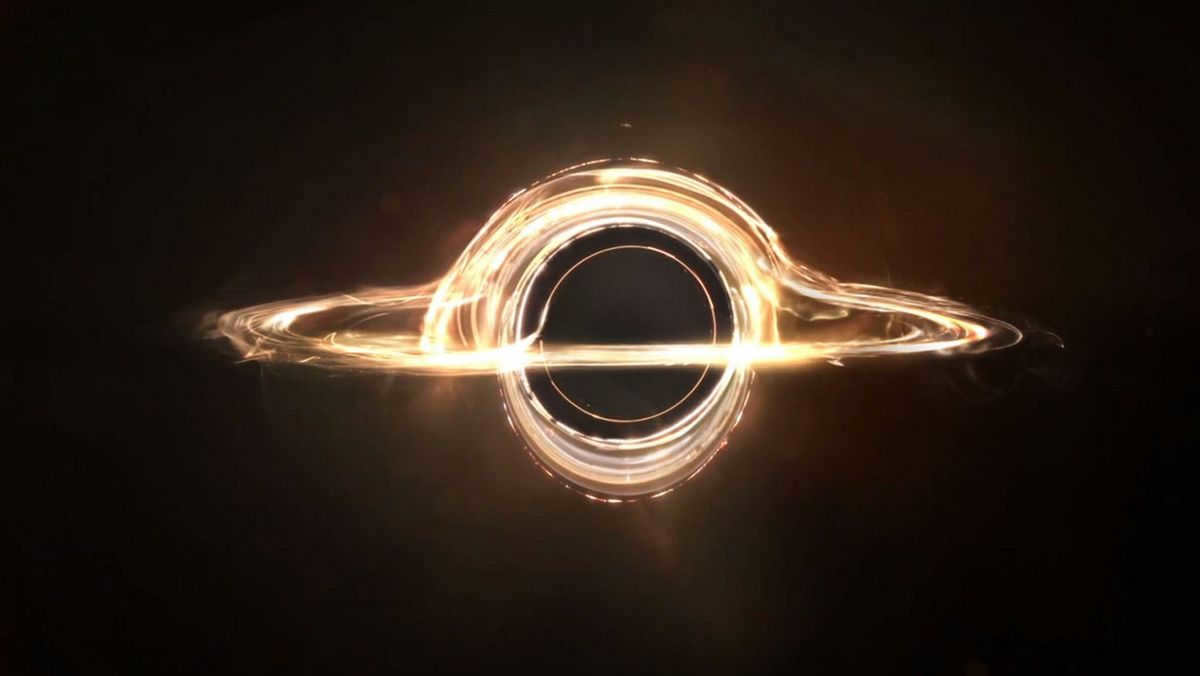
Behold this awe-inspiring vortex of wreckage encircling our world.

Experience the auditory sensation of the cosmos

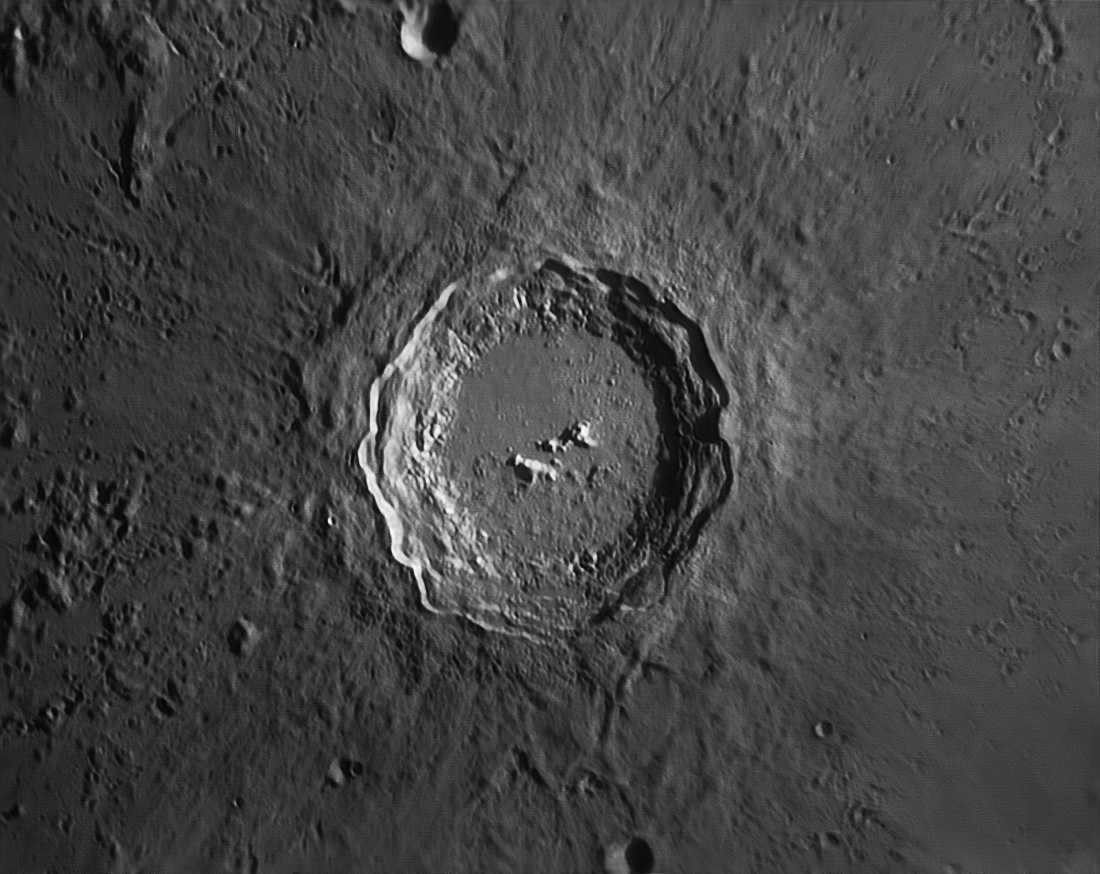
Here are 10 items that humans intentionally launched into the stratosphere
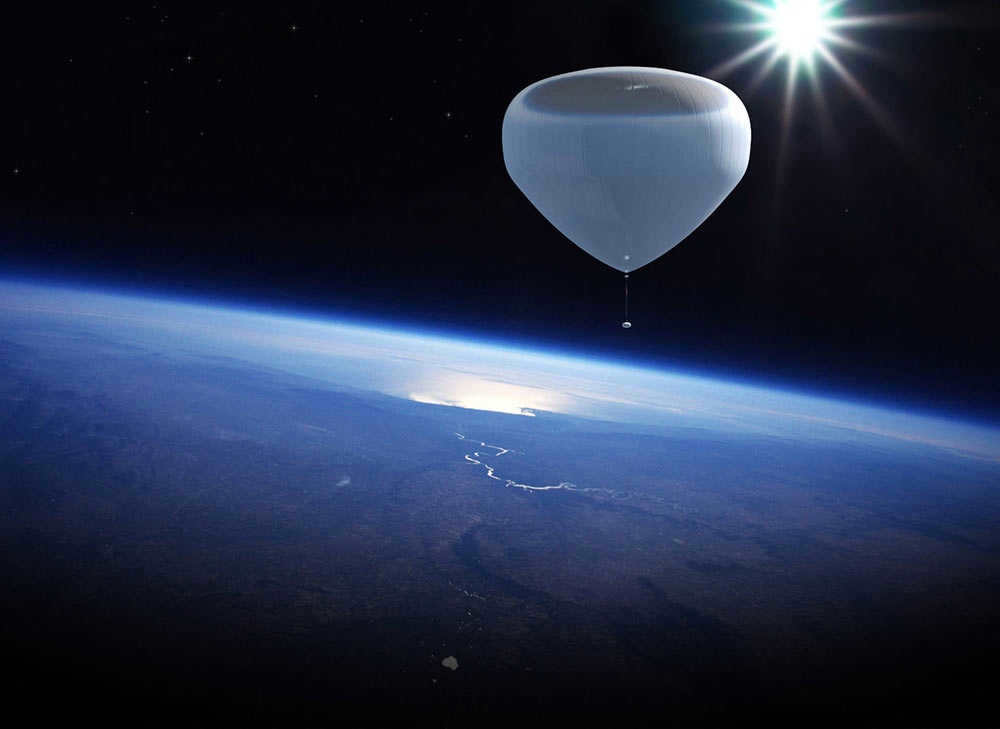
There is a common misconception that the central star of our galaxy emits light instantaneously and its rays reach us immediately. However, this is not accurate. It is actually quite fascinating to calculate the amount of time it takes for light to travel from the Sun to the Earth and understand why this duration varies throughout the year. These facts are not only intriguing for children, but also for adults.
How the Sun produces light
The light that provides warmth to all life on our planet is a product of intricate chemical reactions. The Sun, a massive luminous sphere, consists of multiple layers of hydrogen and helium, stretching hundreds of thousands of kilometers. The surface temperature of this celestial body is approximately 6000 Kelvin or 5726.85°C. However, at its core, where sunlight originates, the temperature rises significantly to a staggering 15 million °K.
Under such extreme conditions of temperature and pressure, the process of thermonuclear fusion takes place incessantly within the core: four hydrogen atoms combine to form a helium nucleus. This process repeats infinitely. In just one second, as a result of this fusion, 600 million tons of hydrogen are converted into helium. Furthermore, every 70 thousand years, the Sun converts hydrogen into helium equivalent to the mass of the Earth.
Did you know that it takes a photon 200,000 years to travel from the core of the Sun to the surface?
How long does it take for light to travel from the Sun to the Earth?
In order to calculate the time it takes for light to reach the Earth, we need to know the distance between our planet and the Sun, as well as the speed of light. The first attempts to calculate this distance were made in the late 17th century, but the figures obtained at that time were inaccurate. However, it is now known that the distance is approximately 139 million kilometers.
Later, more precise calculations have been conducted, revealing that the distance between the Sun and the Earth amounts to 150 million kilometers. Although this measurement is commonly referred to as an astronomical unit and is considered constant, it should be noted that our planet follows an elongated elliptical trajectory, resulting in a varying distance between these two celestial bodies. In January, this distance decreases to 147 million km (perihelion), while in July it reaches its maximum at 152 million km (aphelion).
In 1975, the exact speed of photons in a vacuum was determined to be 299,792,458 m/s, although most calculations employ an approximate value of 300 thousand km/s.
The time required for solar rays to traverse the distance to the Earth during different stages of our planet’s orbit is presented in the table below:
Therefore, at any given moment throughout the year, it takes approximately 8 minutes and 3-25 seconds for sunlight to reach the Earth. In the event that the Sun were to suddenly extinguish, inhabitants of the Earth would become aware of this occurrence after the aforementioned time period.
Fascinatingly, solar radiation possesses the ability to penetrate up to 85 meters beneath the ocean’s surface. Moreover, as it traverses various substances, it can be decelerated or refracted, ultimately converging at a singular focal point.
How much time does it take for light to travel from other objects to Earth?
In order to calculate the distance between various objects in space, astronomy utilizes a measurement known as a light year. This unit represents the distance that light covers over the course of a standard Earth year while traveling through outer space. In numerical terms, a light year is equivalent to 9,460,730,472,580,800 meters or over 63 thousand astronomical units.
The duration it takes for photons of sunlight to reach different objects in the universe is as follows:
- For the planet Pluto, which is the farthest object from the Sun, it takes 5 hours for the photons to arrive.
- For the most distant location within our system, which is the asteroid cloud and Oort debris, it takes a whopping 1.5 years.
- For the closest bright star to Earth, Proxima Centauri, it takes 4 years for the light to reach us.
Light takes approximately 1.2 seconds to travel the distance between the Moon and the Earth, and radio waves also move at this speed. This presents challenges in the control of spacecraft, such as the Lunokhod, as the signals experience a delay.
The propagation of light is not instantaneous, which is why many space-related events can only be observed after a significant delay. For instance, the brilliant star Polaris is situated 400 light years away from our planet. The light we see from Polaris today was actually emitted during the time of Christopher Columbus.
Throughout history, gazing up at the radiant Sun suspended in the heavens, every visionary individual has inevitably pondered the enigmatic secrets that this celestial body holds. What lies concealed within its fiery depths? How great is the expanse that separates our Earth from this luminous orb? Those embarking on a quest for knowledge can only speculate and hypothesize. Nonetheless, certain truths have been unearthed, and the purpose of this composition is to shed light upon several of these remarkable revelations….
The Sun, a yellow dwarf, is a young star of the third generation. Its diameter is approximately 1,392,000,000 kilometers (equivalent to about 109 Earth diameters), and it weighs around 1.9885-kg (approximately 322940 Earth masses).
To determine the Sun’s radius in kilometers, divide its diameter by two. It formed from the remnants of celestial bodies from previous generations and is estimated to be around 4.57 billion years old, making it currently in the middle of its lifespan.
The Sun serves as both a source of energy and life on Earth. However, in the future, it will also contribute to the extinction of the blue planet.
Over the millennia, the Sun’s radius may experience fluctuations depending on the reactions occurring on its surface.
Composition
The celestial luminary is primarily comprised of:
All other components consist of metals, accounting for less than 2% of the overall mass. The composition of the Sun was inherited from the interstellar medium in which it originated. The core occupies approximately 20 to 25 percent of its radius. The core temperature is approximately 15.7 million Kelvin, while the surface temperature is around 5800 Kelvin.
Energy
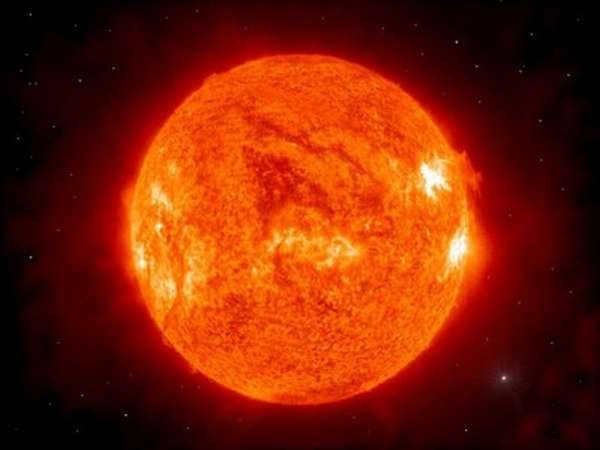
The amount of power received from the Sun on Earth’s surface is approximately equivalent to 1368 watts of energy per square meter. When the Sun is at its highest point in the sky, under clear weather conditions, this energy reaches around 1000 watts per square meter.
When sunlight passes through the Earth’s atmosphere, it is composed of approximately 50% infrared light, 40% visible light, and 10% ultraviolet light.
However, the atmosphere acts as a filter and blocks out more than 70% of the ultraviolet light.
Many individuals are curious about the exact number of kilometers separating our planet from the Sun. The distance between the Earth and the Sun is not fixed. It ranges from 147 to 152 million kilometers due to the elongated orbit of the Earth. The minimum distance, known as “perihelion,” occurs from January 2 to January 5, while the maximum distance, referred to as “aphelion,” occurs from July 2 to July 5. Throughout the year, our planet continuously moves between these two points, creating a never-ending cycle. Despite these slight fluctuations, they do not impact the Earth’s climate. Scientists possess the knowledge and formulas necessary to calculate the distance to the Sun at any given time of the year.
Important Information! The nearest planet to the Sun, Mercury, is approximately 58 million kilometers away.
The measurement of the Sun’s diameter in kilometers, along with other distances in space, can sometimes be inconvenient. There exist alternative units of measurement for outer space. For instance, in terms of light years, it takes approximately 8 minutes and 20 seconds for light to travel from the Sun to the Earth. This means that when we observe the Sun, we are seeing it as it appeared 8 minutes ago. Conversely, a light year represents the distance that a beam of light travels in one tropical year.
So how was the distance determined
Throughout history, astronomers have been seeking to answer the question: what is the distance between the Earth and the Sun? One notable figure in this quest was Giovanni Domenico Cassini, an Italian-French engineer and astronomer who made significant contributions in the field. In 1673, Cassini was able to determine the distance to the Sun by calculating the parallax of Mars. He conducted his observations and calculations from Paris, and his results revealed that the Earth is approximately 138.5 million kilometers away from the Sun. Although this measurement was about 11.5 million kilometers less than the actual distance, it was a remarkable achievement considering the scientific standards of that time.
In the 1960s, a new method called radiolocation was introduced to calculate gaps. The principle behind this technique involves sending a short yet powerful signal towards a celestial object and capturing its reflection. Since radio waves travel at the speed of light in space, accurately measuring the time it takes for the pulse to pass allows for easy calculation of the distance to any object, not limited to just space.
Thanks to radiolocation, astronomers were able to accurately determine the distances to various cosmic objects. They also established the value of an astronomical unit: 1 a.u. = 149,597,870 km +- 1 km. This level of precision proved to be sufficient for scientific purposes. In practical applications, the distance is often rounded to 149,600,000 km, which is equivalent to the parallax of the Sun, measuring 8.794 seconds of arc.
How to reach the Sun
Is it possible to travel to a scorching star using a rocket? In theory, it is not a problem for modern humans to fly to the Sun.
The crucial factor is that once the spacecraft takes off from Earth, it needs to decelerate its speed to be slower than the Earth’s orbital speed.
Once the spacecraft escapes Earth’s orbit, it will be pulled towards the Sun and descend in a spiral path towards its surface. It is essential to remember that this is a one-way journey, and the spacecraft will burn up during its approach to the Sun.
However, if we assume that this does not occur, the entire trip in the spacecraft would last approximately seven to eight months. Considering the vast distance involved, this is not an excessively long duration.
Investigation
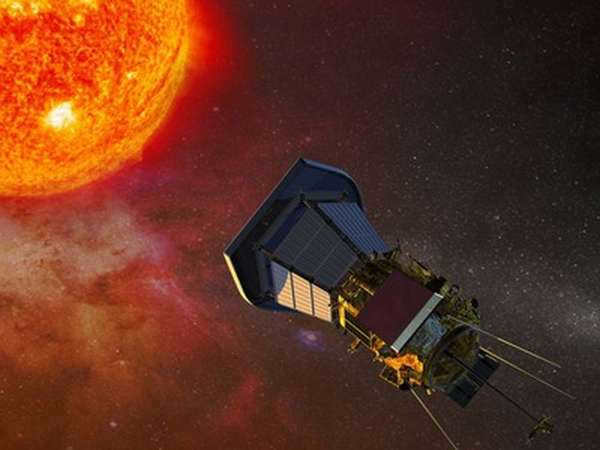
When did scientists begin to take a serious interest in the star? The initial observations of the Sun beyond Earth’s atmosphere were initiated in the late 1950s. This involved Sputnik-2, Luna-1 and Luna-2, as well as the American Pioneer series of instruments in the 60s. All of these missions laid the groundwork for solar research, which continues to this day.
An incredibly significant program is the launch of “SOHO” on 2.12.95. In addition to its primary objectives, it has achieved numerous other accomplishments.
For instance, over the course of 15 years, it has discovered 2000 comets. Therefore, the observation and study of the Sun indirectly address several other, less significant but still important objectives.
However, that is not the final decision made by mankind. On 11.02.10, the Americans successfully initiated the launch of Atlas V, which is intended to deploy the Solar Dynamics Observatory (SDO) into orbit.
Attention! The scientists at NASA are not deterred and are actively developing a material capable of withstanding temperatures exceeding 1,400 degrees Celsius. Their objective is to send the spacecraft 6,400,000 kilometers away from the Sun, enabling a more comprehensive examination of this celestial body. Such an endeavor will provide answers to numerous fundamental inquiries, including the possibility of life beyond the Sun.
This mission straddles the line between science fiction and reality, and only a few individuals presently comprehend the incredible era in which we reside. It is an era of exploration and boundless prospects, when interstellar journeys have commenced and anything is conceivable.
Conclusion
It is an undeniable fact that one day, our parent, the Sun, will cease to exist. However, how we choose to respond to this fact is entirely up to us. We can either panic and view it as a catastrophic event, similar to the biblical apocalypse, or we can actively seek out solutions. It is crucial that we thoroughly research this issue and dedicate all of our resources to unraveling its mysteries and finding the answers we seek.
> > > > How much time does it take for sunlight to travel from the Sun to the Earth?
The speed of light – Exploring the duration it takes for sunlight to travel from the Sun to the Earth: an in-depth analysis of the Earth’s orbital path through captivating imagery, the distance between the two celestial bodies, and the Earth’s position as the third planet in our solar system.
It may seem peculiar because there is a common belief that the Sun simply emits light and everything happens instantaneously. The Sun’s rays actually travel to us at the speed of light and in a vacuum environment. To put it simply, it takes 8 minutes and 20 seconds for the rays to reach us. Interestingly enough, if our star were to suddenly disappear, it would only take 8 minutes for us to notice.
Understanding the speed of light is crucial in the field of astronomy, so let’s delve into some mathematics. The distance between the Earth and the Sun is approximately 150 million kilometers, and the speed of light is 300,000 km/s. If we divide these values, we arrive at the indicated time. However, it’s important to note that this is an average figure.
Let’s not forget that our planet orbits in an elliptical path and its distance varies from 147-152 million km. At its closest approach, the speed would be 490 seconds, and at its farthest distance, it would be 507 seconds. However, what comes next is even more fascinating.
Within the core of the sun, fusion takes place, resulting in the creation of photons. It all starts with gamma rays, which are absorbed multiple times by the star, travel through its interior, and eventually reach the surface. But what’s truly incredible is that the light you see today was actually generated tens of thousands of years ago! It took 8 minutes for it to escape and finally reach you.
Let’s consider the positive aspect. In the event that there are intelligent extraterrestrial beings observing our planet at the moment, they would only observe dinosaurs. This is precisely why the speed of light holds significance for scientists and cosmologists.
What is the duration for sunlight to reach Earth? Clearly, sunlight travels at the speed of light. Photons emitted from the surface of the Sun require a certain amount of time to traverse through the cosmic vacuum and reach our visual organs. On average, sunlight covers the distance from the Sun to Earth in 8 minutes and 20 seconds. If the Sun were to suddenly vanish from our universe, you would have a little over 8 minutes before you would perceive any anomaly.
So, how can you obtain those 8 minutes and 20 seconds? Our planet is currently in orbit around the Sun, which is approximately 150 million kilometers away. The speed of light is 300,000 kilometers per second. By dividing the distance between the Earth and the Sun by the speed of light, we can calculate that it takes approximately 500 seconds, or 8 minutes and 20 seconds, for light to travel from the Sun to the Earth. However, it’s important to note that this is an average time, as the Earth follows an elliptical path around the Sun. The shortest distance between the Earth and the Sun is about 147 million kilometers, and at this distance, it takes approximately 490 seconds for light to reach the Earth. On the other hand, the longest distance is about 152 million kilometers, and at this distance, it takes approximately 507 seconds for light to reach the Earth.
When you think about the path of photons within the Sun, things become even more fascinating. Most people are aware that photons are generated through thermonuclear reactions in the core of the Sun. However, what is truly remarkable is that these photons go through a series of emissions and absorptions within the radiant zone of the star before they eventually make their way to the surface. In fact, the photons that eventually reach your eyes were actually produced tens of thousands of years ago. Therefore, the relatively brief 8-minute journey to Earth is merely a fleeting moment in the lifespan of a photon.
It is evident from all of this that when you gaze into the vastness of space, you are essentially peering into the past. The light emitted by our closest star, Alpha Centauri, takes approximately 4 years to reach us. Therefore, when we observe this star, we are actually witnessing what it looked like 4 years ago. Furthermore, there are galaxies situated millions of light years away from our own. If there happens to be a civilization possessing highly advanced technology in one of these distant galaxies, they may even have the ability to witness the majestic sight of dinosaurs roaming the surface of our planet.
You are likely aware that it takes about 8 minutes for light from the Sun to reach Earth. This speed is astonishingly quick when compared to the amount of time it takes for light to travel from the inner core of the Sun to its outer edges.
The reality is that photons, which are light particles, do not travel directly from the Sun’s core to the outer regions. Upon exiting the core, they enter a zone known as the radiative transfer zone, where energy is transferred through the absorption and re-emission of photons. Furthermore, the absorption and re-emission of photons is not affected by the direction in which they were initially directed. As a result, photons that are repeatedly emitted require a significant amount of time to escape and reach the outer regions. This journey can span millions of years, with an average duration of approximately 170,000 years.
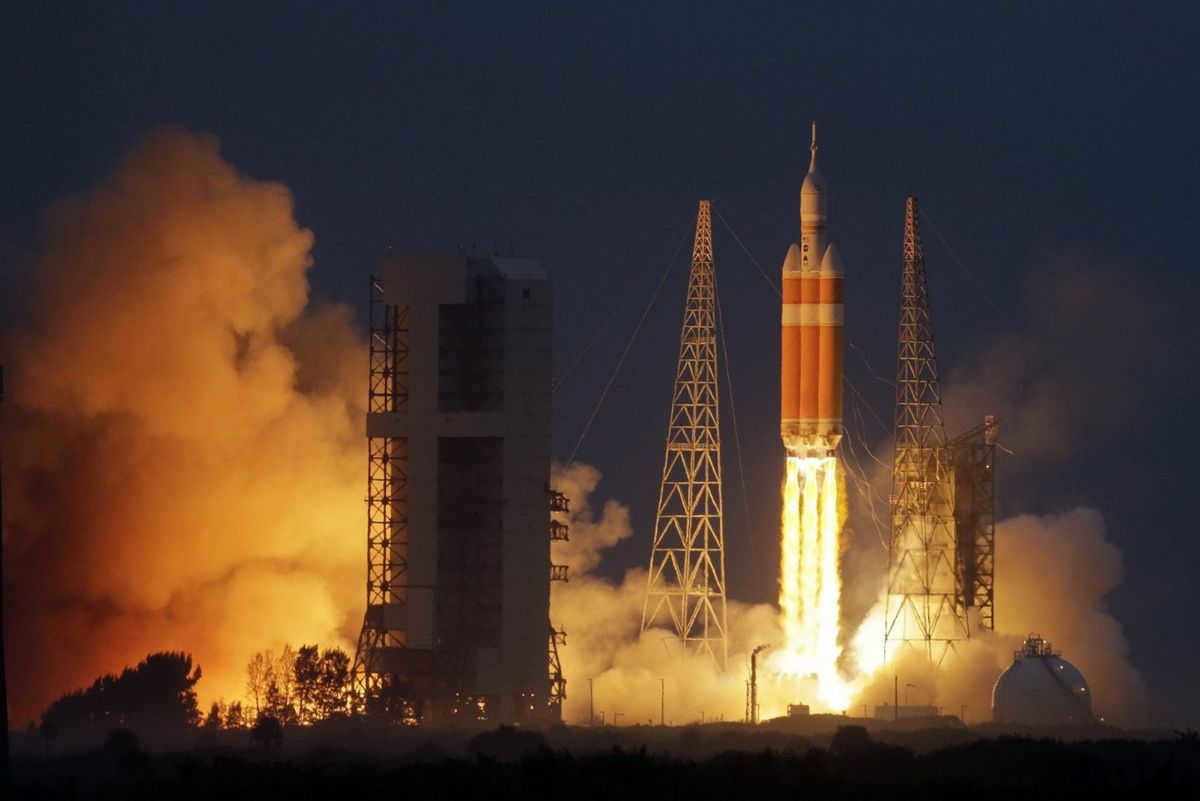
Scientists are currently seeking answers to the top 10 inquiries about the universe.
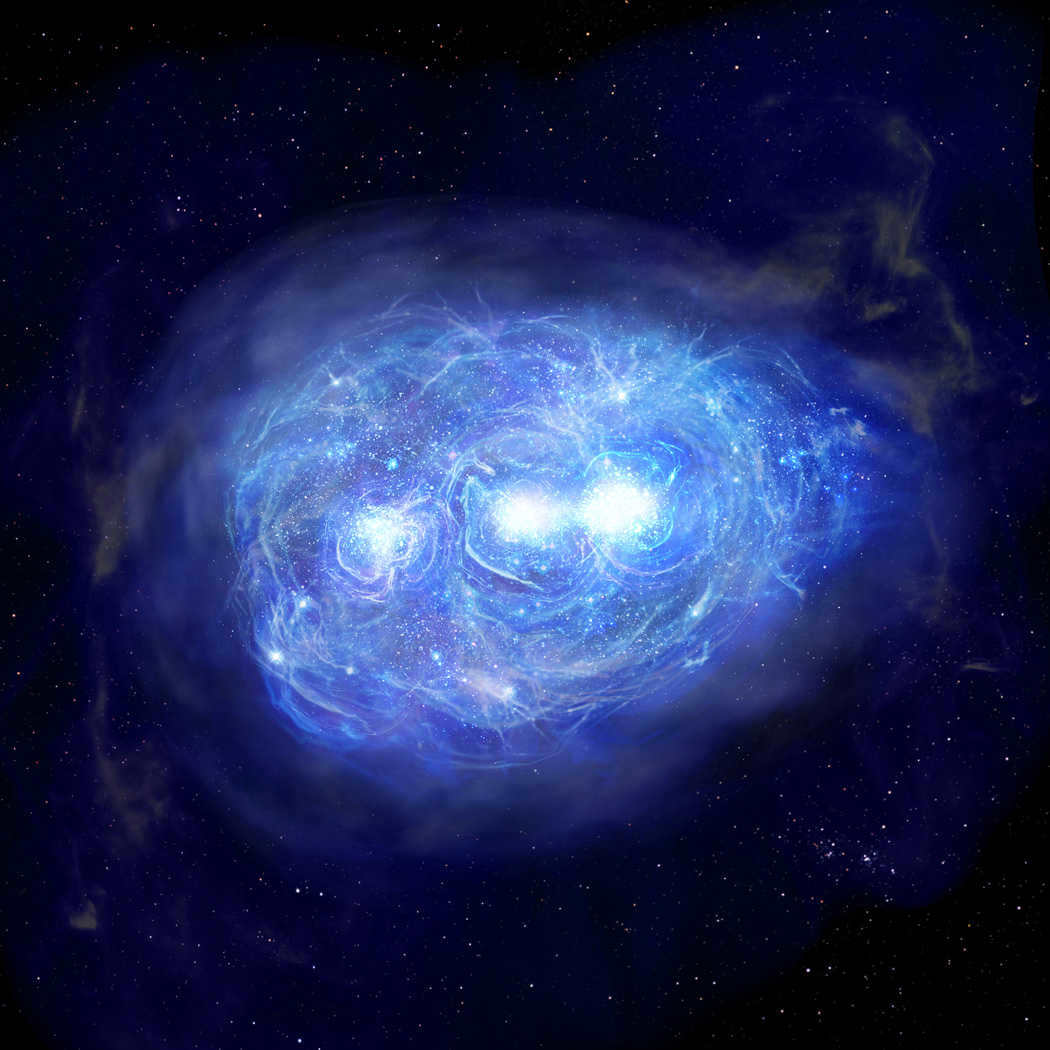
Has there been any occasion when Americans have visited the moon?

Russia lacks the capacity for manned missions to the moon

10 methods by which the cosmos may bring about human demise
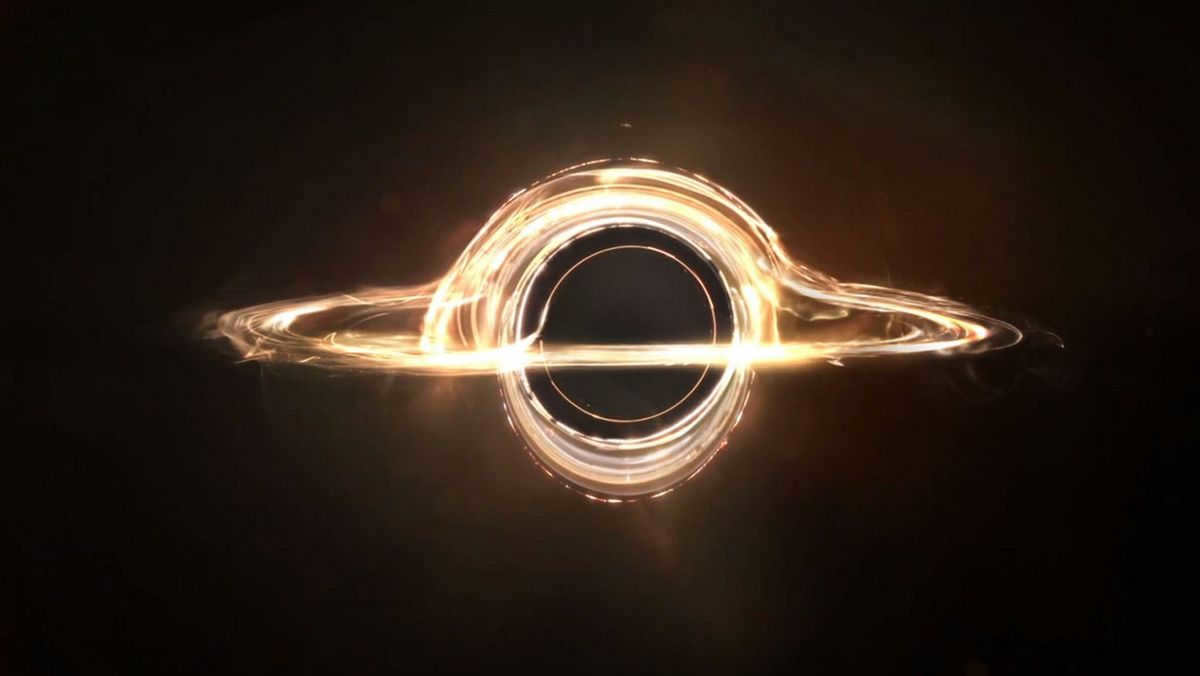
Observe this remarkable vortex of fragments encircling our world.

Experience the auditory sensation of the cosmos

Here are 10 items that humans intentionally launched into the stratosphere.
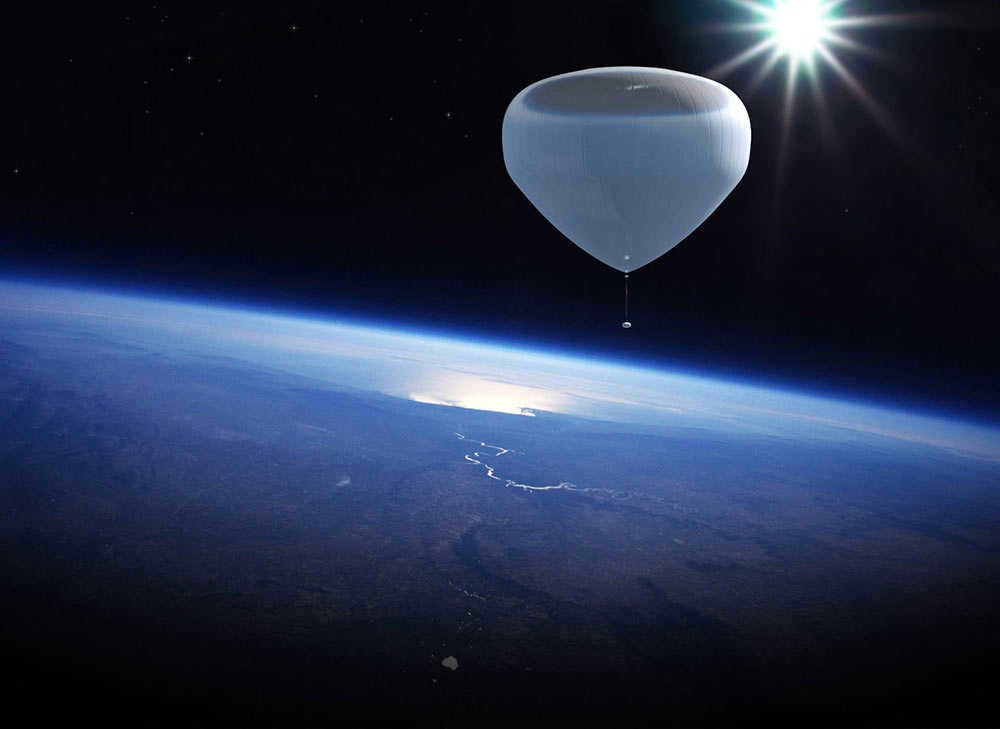
This luminous celestial body is too dazzling for the unaided human eye. However, upon closer examination, one can discern the authentic essence of the sun. This colossal orb of incandescent gas stands as the most expansive entity within the solar system. The sun emits both heat and light, serving as the ultimate source of vitality for all life on Earth. Deep within its core, an unceasing nuclear reaction takes place. Our stellar companion may possess inherent hazards, yet our existence depends on its presence. Without the sun, every facet of life as we know it would cease to persist.
The Sun is composed of multiple layers of dense gas that span hundreds of thousands of kilometers. At the core of the Sun lies the nucleus responsible for generating sunlight, a result of one of the most destructive reactions known to the universe: nuclear fusion. By combining two hydrogen atoms, a complex reaction occurs, leading to the production of helium. While this process may sound straightforward, it is far from it. Combining two atoms is actually quite challenging, as the positively charged protons within them repel each other. Protons naturally avoid close proximity, making fusion a rare occurrence that demands an immense amount of energy. Thankfully, the intense heat and pressure generated by gravity facilitate proton fusion.
The Sun holds approximately 99.8% of the material in the whole solar system. and the entirety of that mass is maintained by the Sun’s layers utilizing a commanding gravitational force. Gravity aids in the fusion of hydrogen atoms, resulting in nuclear fusion. In this nuclear reactor, hydrogen atoms combine an “endless” number of times every second. Some collisions are so intense that the atoms merge, releasing energy. However, surprisingly, it is exceptionally feeble. Less than 1% of protons are transformed into energy during fusion, not even enough to power a car engine. Furthermore, this energy is exclusively generated through fusion. The majority of protons colliding with one another do not fuse. This enables the Sun to sustain its existence for another 10 billion years.
The journey of the tiniest unit of light, known as the photon, commences within the radiant core of the Sun. Initially emerging as a gamma ray, the photon swiftly exits the solar core at the speed of light. In the absence of any hindrances, it would breach the Sun’s surface within a mere 2 seconds. However, due to the Sun’s immense density, the photon encounters an arduous obstacle course spanning thousands, if not millions, of years before successfully permeating its layers of diverse gases and escaping. Departing from the solar core, the nascent photon navigates through a dense layer of hydrogen atoms, which extends over 600 thousand kilometers. This formidable barrier requires 100 years for the photon to surmount. Subsequently, it embarks on the challenge of penetrating the Sun’s plasma, a vast expanse spanning 320 thousand kilometers. Possessing an electric charge, the plasma impedes the photon’s progress, momentarily detaining it before releasing and causing it to collide with other plasma particles. These intricate processes endure for thousands, and even millions, of years until, at last, the photon liberates itself and continues its odyssey towards Earth or other reaches of the cosmos.
Publicly accessible information about our closest space environment is now available, enabling everyday users to determine distances to nearby planets and estimate travel times to them without ever leaving their homes. If you are curious about the distance between Mars and the Sun, it is important to have a basic understanding of how cosmic distances are measured.
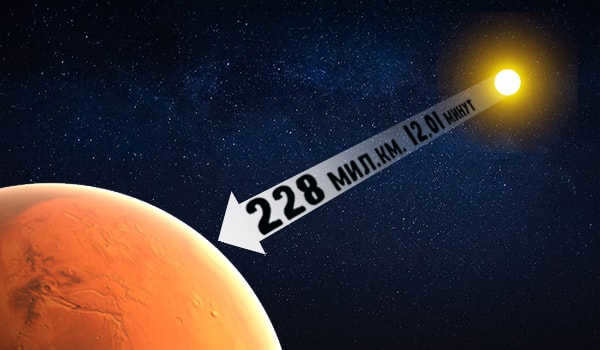
How the distance to the stars is measured and what a light year is
Distances in space are measured using special units that are separate from the international system of measurement. One such unit is the astronomical unit (A.U.), which represents the average distance between the Earth and the Sun.
A.U. – is a unit of distance in astronomy, equal to 149,597,870 km
Another way to describe this unit is as the radius of our planet’s orbit.
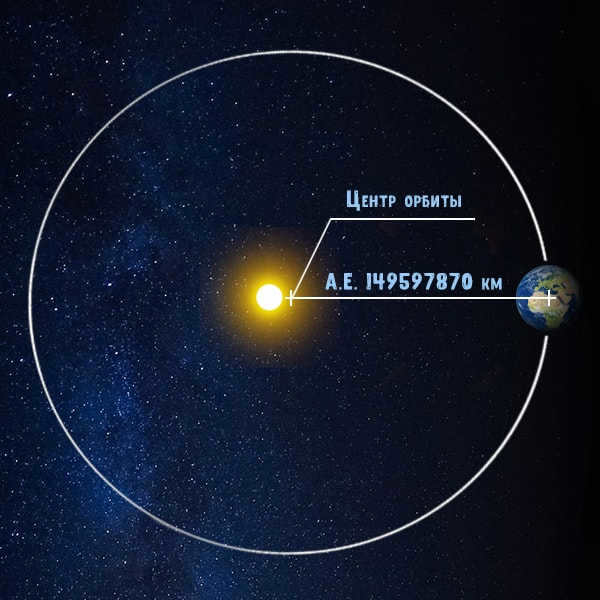
AE represents the distance between the Earth and its orbit’s centers.
When it comes to measuring distances between objects in a star system like the solar system, we use astronomical units. However, when it comes to the vast scale of the Universe, a.u. is a relatively small unit of measurement. This is why distances between stars and galaxies are typically expressed in light-years.
In the field of physics, light has long been considered the fastest phenomenon in the world. However, even on a cosmic scale, light does not travel instantaneously. As it traverses the Universe, light can slow down, scatter, change its spectrum, and encounter various obstacles along the way.
A light year is the distance that light can travel in one Earth year, which amounts to approximately 9,460,730,472,580,800 kilometers.
The distance of one light year is equivalent to the multiplication of the speed of light by one Earth year. Before multiplying, the Julian year, denoted as a, needs to be converted to seconds since the speed of light is also measured in seconds.
Julian year (a ) is a unit of time measurement in astronomy that is equal to 365.25 Julian days
By using astronomical units, we can conduct more intricate calculations.
Speed of Light
The term “visible light rays” refers to a continuous flow of particles known as photons, derived from the Greek word “photos” meaning “light”.
For humans, a light-year is an incredibly vast distance that cannot be overcome. The average person, operating under the influence of Earth’s gravity, can achieve a speed of approximately 20 kilometers per hour. In contrast, photons travel 60 million times faster, covering a distance of 300 thousand kilometers every second. This represents the maximum speed achievable by visible light in a vacuum.
The speed of light in a vacuum is 299,792,458 m/s.
When light travels through a medium such as air or water, such as in the Earth’s atmosphere or oceans, it only loses up to 25% of its speed and can still travel at a rate of 225 thousand kilometers per second.
These findings provide valuable information for calculating the feasibility of interplanetary and interstellar travel. In just one minute, light can cover a staggering distance of 18 million kilometers.
As humans continue to make technological advancements and approach the speed of light, the time required for space travel will continue to decrease.
How far is Mars in light years?
Calculating the distance to Mars in light years is an interesting concept. We know that light travels at a speed of 9460.73 billion kilometers per year. So, if we were to measure the distance between Earth and Mars in light years, it would be quite a large number.
However, it’s important to note that the distance between Earth and Mars is constantly changing due to the planets’ orbit around the Sun. Sometimes, the planets are close to each other, while other times they are on opposite sides of the star at extreme distances. This makes it difficult to determine the exact distance in light years.
One thing we do know is that the minimum possible distance between Earth and Mars is 54.55 million kilometers. This means that, at the closest point, it would take light approximately 5.77 minutes to travel from Earth to Mars.
So, while we can’t give an exact answer in light years, we can say that the distance to Mars is quite vast and would take a considerable amount of time to travel.

It takes approximately 0.0000057 light years for light to travel from Earth to Mars.
Based on this information, we can deduce that the shortest distance between the two planets is equivalent to 181 light seconds or 3 light minutes. In simpler terms, it would take light 0.00000570776255707763 light years to travel between Mars and Earth.
The time it takes for light to reach Mars
Despite the fact that it is physically impossible to reach, there is a way to accurately determine the average amount of time it takes for starlight to travel from the Sun to Mars.
The journey from the central star of our solar system to Mars can be completed by a photon, which is a tiny particle of light, in approximately 12.01 minutes. These calculations are based on the constant speed of light in a vacuum, which is 300,000 kilometers per second, and the average distance between Mars and the Sun, which is 228 million kilometers.
By dividing the distance of 228,000 thousand km by the speed of light (300 thousand km/s), we can determine that it takes approximately 760 seconds, or 12 minutes and 1 second, for light to travel from the Sun to Mars or vice versa. However, it is important to note that this time may vary depending on the position of Mars in its orbit. When Mars is at its farthest point from the Sun (aphelion), light will take approximately 13.01 minutes to travel, while at its closest point (perihelion), it will take approximately 11 minutes.
What is the duration of a journey to Mars if we travel at the speed of light?
The time it would take to travel to Mars at the speed of light can be easily calculated based on the information provided. There is a well-defined flight path and the minimum distance between Earth and Mars is accurately known to be 54 million kilometers. If we were able to travel at the speed of light, which is equivalent to a light flux of 3 minutes, the journey to Mars would be almost instantaneous, rather than taking several months. It is difficult to compare the three minutes it would take to travel between Mars and Earth at light speed to any form of transportation on Earth.
If humanity can achieve the ability to travel at the speed of light, then reaching the Red Planet would be within our grasp. Given the current rate of scientific progress, it is only a matter of time before new futuristic modes of transportation are discovered.

At present, 58,742 educational institutions have the opportunity to benefit from additional cumulative discounts ranging from 2% to 25%. If you want to know the discount that applies to all employees of your educational institution, simply access your personal Infoworks account.
Course for enhancing professional skills
Current Challenges in Establishing a Health-Supportive Environment in Supplementary Education
We have the ability to include your educational institution’s discount in addition to this discount (the amount depends on the number of your colleagues who have completed Infoworks courses).
At present, 58,742 educational institutions are eligible for additional discounts ranging from 2% to 25%. To determine the specific discount applicable to all staff members of your educational institution, please log into your personal Infoworks account.
Continuing Education Course
Addressing Corruption in an Educational Institution
We are able to incorporate your educational organization’s discount along with this offer (the amount will depend on the number of your colleagues who have enrolled in Infoworks courses).
Currently, there are 58,742 educational institutions benefiting from additional discounts (ranging from 2% to 25%). To determine the discount available for all staff members of your educational institution, please log in to your personal Infoworks account.


Current and modern issues in the education system
Description of the presentation by individual slides:

Slide 2: Our Sun is commonly referred to as a typical star; however, within the vast array of stars, there are numerous ones that exhibit distinct physical characteristics from it.
Vesta
Pallada
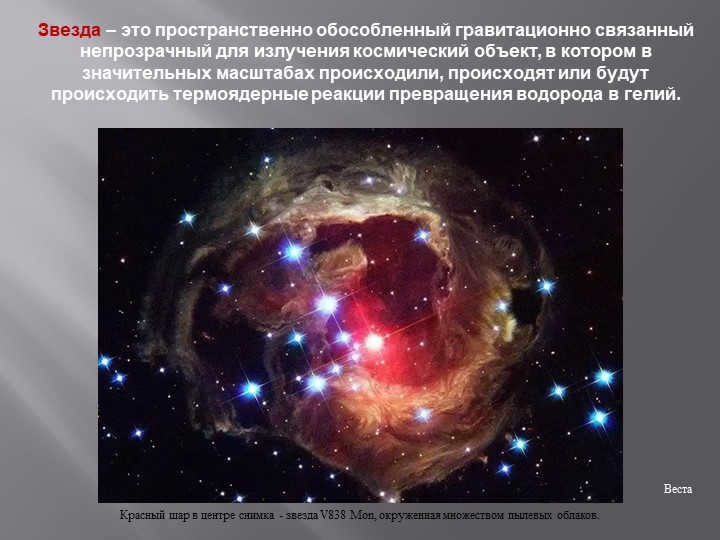

Slide 3: A star is a celestial object that is spatially isolated, gravitationally bound, and opaque to radiation. Inside a star, thermonuclear reactions occur, transforming hydrogen into helium on a significant scale. Some examples of stars include Vesta and Pallada. In the image, the star V838 Mon can be seen as a red ball in the center, surrounded by numerous dust clouds.
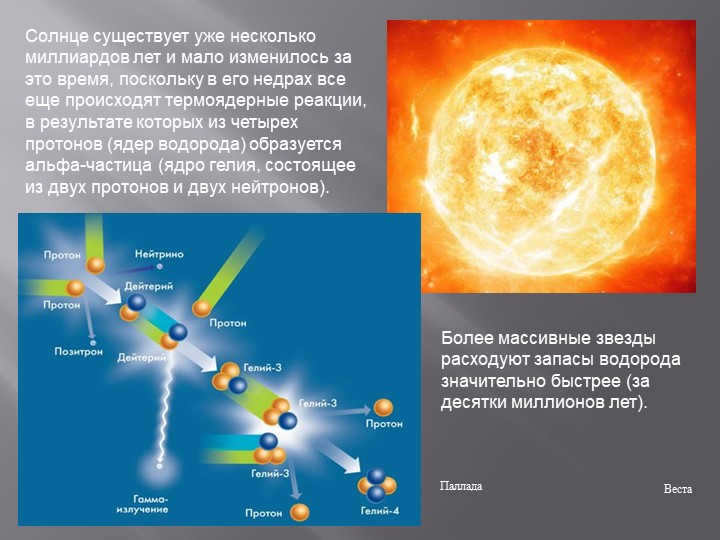
Slide 4: The Sun has existed for billions of years and has remained relatively unchanged during that time due to the ongoing thermonuclear reactions taking place in its core. These reactions involve the conversion of four protons (which are hydrogen nuclei) into an alpha particle, which is composed of two protons and two neutrons.
Furthermore, it is worth noting that other celestial bodies, such as Vesta and Pallada, may also exhibit similar characteristics.
However, it is important to recognize that more massive stars deplete their hydrogen reserves at a much faster rate, typically within tens of millions of years.
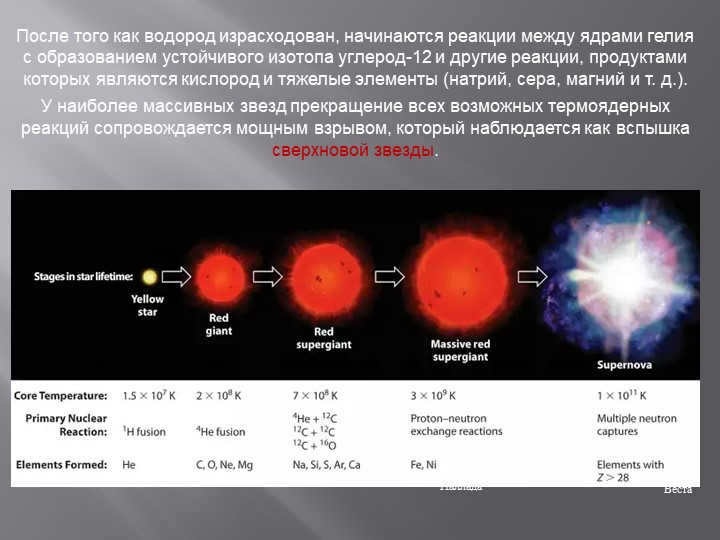

On the fifth slide, when the hydrogen is exhausted, reactions commence between helium nuclei, resulting in the formation of the stable isotope carbon-12 and other reactions that give rise to oxygen and heavy elements such as sodium, sulfur, and magnesium.
In the case of the most massive stars, the cessation of all possible thermonuclear reactions is accompanied by a powerful explosion, which is observed as a supernova eruption.
Vesta
Pallada


In fact, it is these thermonuclear reactions that differentiate stars from planets.
A planet is a celestial object that has never experienced any thermonuclear fusion reactions throughout its entire existence.
Vesta
Pallada

Slide 8: The concept that stars are distant suns was first proposed in ancient times.
Even the philosopher Aristotle understood that if the Earth is in motion, observing the position of a star from two opposite points on the Earth’s orbit would reveal a change in the star’s direction.
This apparent displacement, known as parallax, can be used as a measure of the star’s distance:
The greater the displacement, the closer the star is to us.
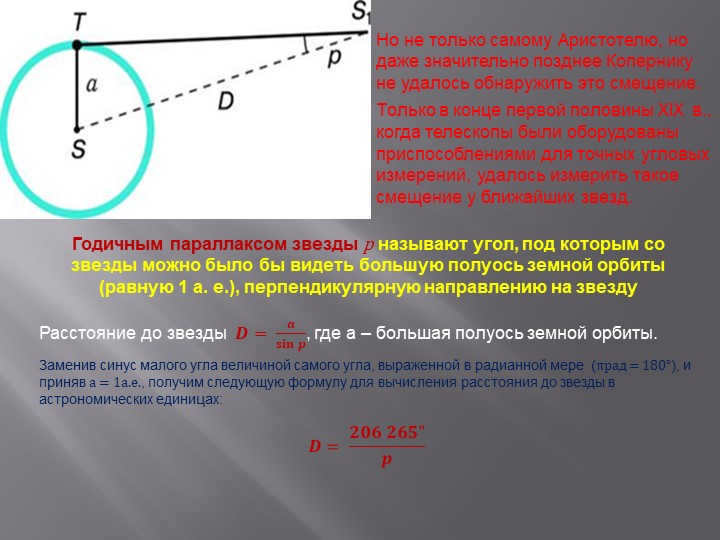
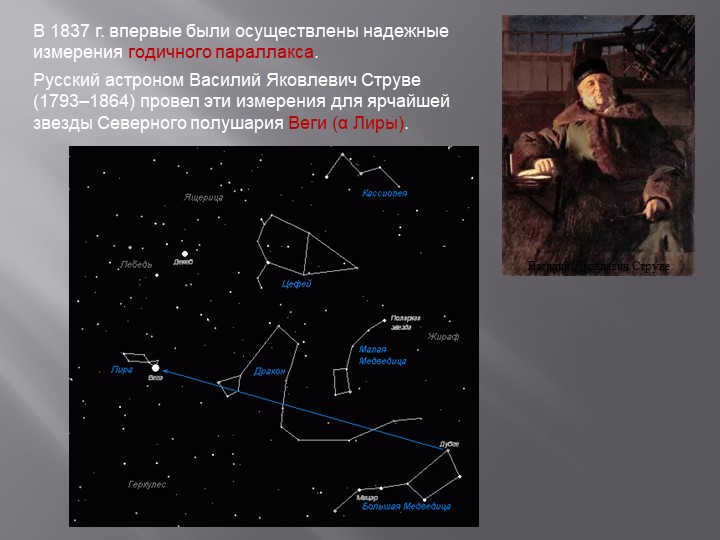
10 slide In 1837, the initial accurate calculations of yearly parallax were conducted.
These measurements were performed by the renowned Russian astronomer Vasily Yakovlevich Struve (1793-1864) on the most luminous star in the Northern Hemisphere, Vega (α Lyra).
Vasily Yakovlevich Struve
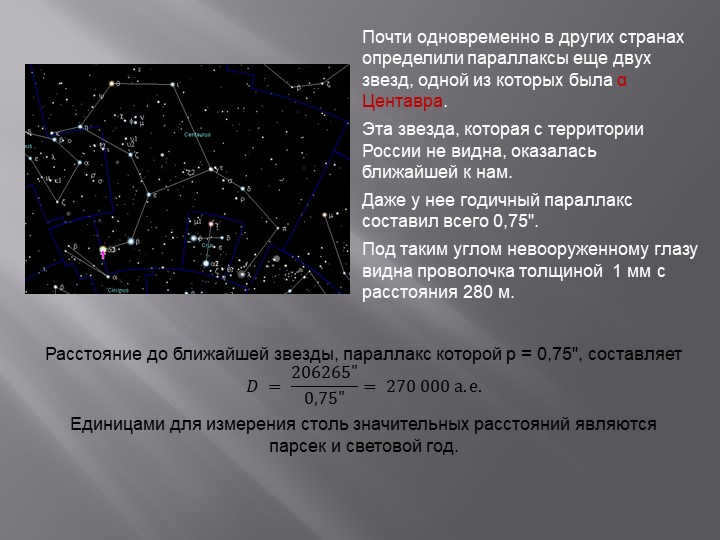
Slide 11: Almost at the same time, two additional celestial objects were measured for their parallax in different countries.
One of these objects was α Centauri, which cannot be seen from Russia.
Surprisingly, α Centauri turned out to be the closest star to us.
Its annual parallax was only 0.75", which is equivalent to the angle at which the naked eye can perceive a wire that is 1 mm thick from a distance of 280 meters.
Using the formula 𝐷 = 206265" × 0.75", we can calculate that the distance to the nearest star with a parallax of 0.75" is approximately 270,000 astronomical units (a. eu).
Scientists use units such as the parsec and the light year to measure such vast distances.
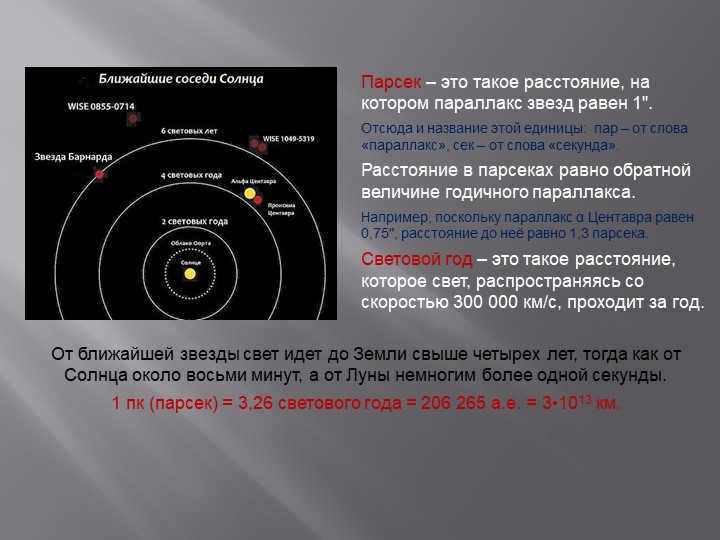

12 Slide A parsec, derived from the words “parallax” and “second,” is a unit of length used in astronomy. It represents the distance at which the parallax of a star equals 1 arcsecond. The distance in parsecs can be determined by taking the inverse of the annual parallax. For instance, if the parallax of α Centauri is 0.75 arcseconds, its distance would be 1.3 parsecs.
A light-year, on the other hand, is the distance that light, traveling at a speed of 300,000 km/s, covers in one year. To put it into perspective, it takes over four years for light from the nearest star to reach Earth, while it only takes about eight minutes for light from the Sun to reach us, and a little over one second for light from the Moon to reach us.
In terms of conversion, 1 parsec is equivalent to 3.26 light-years, 206,265 astronomical units (a.u.), or 3 x 10^13 kilometers.
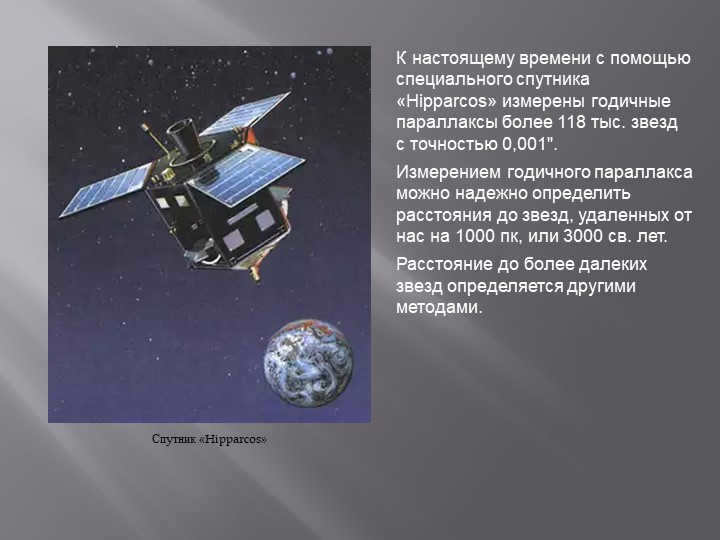

13 Slide So far, the special Hipparcos satellite has accurately measured the annual parallaxes of over 118,000 stars to within 0.001". This incredible satellite allows us to reliably determine distances to stars that are 1000 pc away or 3000 sv years away from us. For stars that are further away, different methods are used to calculate their distances. The Hipparcos satellite has revolutionized our understanding of stellar distances.

Exercise 18, #3 on page 152 involves determining how long it takes for light to travel from Vega to Earth, given that Vega’s parallax is 0.11 inches. The solution involves using the formula T = D * 3.26, where T is the time it takes for light to travel in years and D is the distance in parsecs. To find D, we take the reciprocal of the parallax, which gives us D = 1/0.11. This is approximately equal to 9 parsecs. Therefore, T = 9 * 3.26 = 29.3 years. So the answer is that it takes approximately 29.3 years for light to travel from Vega to Earth.

For the 16th slide of our homework, we have two tasks. The first one is related to section 22, subsection 1. The second task is exercise 18, number 4 on page 153. The fourth task is about determining the amount of time it would take to fly towards the constellation Lyra at a speed of 30 km/s in order to make Vega twice as close.

Summary of the document:
Subject: Understanding the composition and structure of the Sun’s atmosphere.
Lesson Objectives: I. Evaluating student knowledge.
1. Exploring the Sun’s luminosity and the methods used to determine it, such as the Stefan-Boltzmann law.
2. Investigating the Sun’s temperature and its relationship to Wien’s law, as well as examining its chemical composition.
3. Analyzing the Sun’s rotation, size, and mass, and the various methods employed to measure these properties.
II. Computer-based activities
Examining the Sun’s position and coordinates, and accessing relevant photos from both archived and online sources (current time).
III. Conclusion
1. Task: Predicting the effect on the Sun’s luminosity if its temperature were to double while maintaining the same size.
3. Question: What is the secondary space velocity at the level of the Sun’s photosphere?
II New Material. The solar atmosphere is comprised of three layers: photosphere, chromosphere, solar corona.
1. Photosphere – the bright “surface” of the Sun, which is the lower layer of the atmosphere, with a thickness of 300-400km, a temperature of approximately 5800K, and a density of ρcf. ≈10 -4 kg/m 3 ≈10 17 atoms/cm 3. H is hydrogen. It emits all of the energy.
a). Pellets up to 1000km in size, with a lifespan of up to 8 minutes. They continuously appear and disappear due to the movement of matter in the photosphere (rising and falling in the sub-photospheric region due to convection, starting from a depth of 0.3R, similar to boiling rice porridge).
b). Spots are characterized by their size, ranging from several to 100 thousand kilometers in diameter. Some large spots can even last several months. They have a unique structure, consisting of a core and fibrous penumbra. These spots usually appear in groups at latitudes of approximately ±40° (sometimes ±50°), although there are rare cases where only one spot is present. It is essential to note that spots can also be observed on the opposite side of the Sun and gradually descend to latitudes of approximately ±5° before disappearing. The reason why spots are visible is that they are colder than the rest of the photosphere, with a temperature of around 4500K. This temperature difference is caused by the inhibition of convection due to the presence of a magnetic field, which restricts the energy transfer to the surface. The depth of the funnel, where the magnetic field is concentrated, is estimated to be around 300-400km. The existence of a magnetic field in spots is confirmed by the splitting of lines in the spectrum. The strength of the magnetic field in spots ranges from 1500-4500 Ersted, whereas in the calm regions of the Sun, it is only around 5 Ersted. The fact that spots are colder and have a magnetic field was first established by J.E. Hale in 1908. Hale was a renowned American astronomer (1868-1938).
Rudolf Wolf (1816-1893, Switzerland) discovered in 1852 that the occurrence of sunspots follows an 11-year cycle, with 4 years of increased activity followed by 7 years of decreased activity. He introduced the Wolf number W=(10g+f) . k to measure the activity of sunspot formations, where g represents the number of sunspot groups and f represents the number of individual sunspots. On April 8, 1947, the largest sunspot group ever recorded reached its peak. It covered a staggering area of 18130 million square kilometers.
The primary sunspot exhibits one polarity, while the accompanying sunspot displays the opposite polarity. If the primary spot had a north magnetic pole in a particular cycle, it will have a south pole in the subsequent cycle. The most recent observed cycle, Cycle 23, spanned from 1999 to 2001, with the maximum occurring during this period and the minimum occurring in 2006. Typically, the cycle lasts approximately 11.1 years, but its predictability is uncertain.
в) Sunspots were encompassed by luminous halos, known as halos, which have a temperature 10K higher than the surrounding gas and a radius twice as large as that of the sunspot. These halos were discovered in 1999.
g) Flares on the photosphere are formations that appear lighter (about 300 K hotter) due to the increased convection in the sub-photospheric layers, causing the removal of hotter matter. These flares have a long lifespan and can persist for up to a year, with a group of spots accompanying them for about a month. Torch fibers are most visible near the edge of the Sun’s disk, where their brightness exceeds the background by 10-20%.
2. The Chromosphere (derived from the Greek word meaning “sphere of color”) gets its reddish-purple hue, which is only visible during total eclipses or with specialized instruments. It is comprised of three distinct layers: the lower layer, reaching up to 1500 km with a temperature of approximately 5000K; the middle layer spans from 1500 to 4000 km, with a temperature ranging from 6000 to 15000K; and the upper layer extends from 4000 to 10000 km with a temperature of 20000 to 50000K. The brightness of the chromosphere is not evenly distributed. Between the chromosphere and the corona lies a narrow transition layer where the temperature experiences a rapid increase from around 10^4 to 10^6 K.
b) Flares (which occur in the chromosphere) display the highest levels of brightness and are typically found above photospheric filaments and flares.
b) Flares are the most potent and rapidly evolving natural phenomena in the universe. Weak flashes typically dissipate within 5-10 minutes, while the strongest ones can last for several hours. These flares occur when magnetic fields undergo rapid reorganization, resembling a process of “rewiring.” Small flares can occur multiple times a day, whereas the more powerful flares, which can cover an area of tens of billions of square kilometers, are much less frequent. Typically, these flares are observed near sunspots. A flare is an explosive event that releases a stream of electrically charged particles, consisting of protons and electrons.
Spicules, which are protruding flame tongues, can be seen at the edge of the chromosphere. These spicules are elongated columns of compacted gas with higher temperatures than the photosphere. They have diameters of approximately 1000 km, velocities of ascent or descent of around 20 km/s, and lifetimes lasting only a few minutes. When they reach a height of about 3000 km, they cover approximately 2% of the solar surface area. The formation of spicules is influenced by the intricate structure of the magnetic fields in the photosphere.
g) Giant bright flares and arches known as protuberances are seen on the chromosphere and burst into the solar corona, resulting in the ejection of matter, or plasma. The most common type are the “quiet” prominences, which typically appear alongside the development of sunspots but last much longer (up to 1 year). Another type of prominences occurs when matter is ejected upwards (usually after flares) at speeds of around 100-1000 km/s, known as fast-eruptive prominences.
3. Solar corona is an extension that stretches from 1R to 8-10R of the Sun. It can be observed during eclipses (or with a coronograph) and has a silvery-pearl color with temperatures of at least 1 million K. During the MAX period, the solar corona appears almost circular, while in the MIN period it becomes strongly elongated in the equatorial plane. The solar corona is composed of extremely rarefied gas, and even weak magnetic fields that penetrate the corona can have a significant impact on its characteristics and structure. The corona exhibits features such as coronal brushes near the poles, arcs, and coronal rays at lower latitudes. While the structure of the corona is generally stable, there are notable changes that occur over the course of years.
The supercorona – individual plasma emissions are reaching the Earth. The temperature can reach up to 1 million K, as it is heated by the wave motion that arises from the convection motion of gas inside the Sun. The particles are accelerated by a magnetic field, causing them to move in spirals.
4. Solar activity – A cyclic and complex occurrence of unstable phenomena in the Sun’s atmosphere (such as loops, flares, prominences, etc.). The magnetic field serves as the connection between the various centers of activity. This activity has a period of 11 years, consisting of 4 periods of increased activity and 7 periods of decay.

